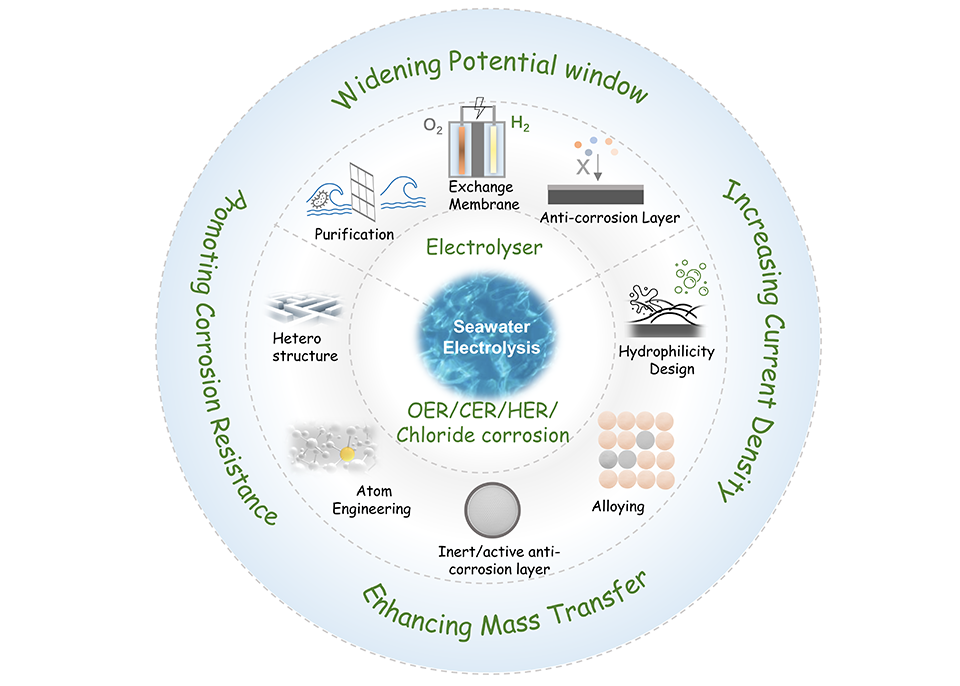

工业级碱性海水电解:近期进展和展望
收稿日期: 2022-06-27
修回日期: 2022-08-04
网络出版日期: 2022-09-30
Alkaline Seawater Electrolysis at Industrial Level:Recent Progress and Perspective
#Tao Zhang and Yipu Liu contributed equally to this work.
Received date: 2022-06-27
Revised date: 2022-08-04
Online published: 2022-09-30
由太阳能、风能和海洋等可再生能源驱动的工业级水分解产氢为能源和环境的可持续性发展开辟了一条极具潜力的道路。然而,在工业上最先进电解技术使用高纯水作为氢源,这将带来严重的淡水资源危机。海水分解为饮用水短缺提供了一条切实可行的解决途径,但仍面临规模工业化生产的巨大挑战。在这里,我们总结了海水分解的最新进展,包括反应机制、电极设计标准和直接海水分解的工业电解槽。深入讨论了应对海水电解中的关键挑战,如活性位点、反应选择性、耐腐蚀性和传质能力等的解决方案。此外,该文章重点总结了海水电解设备的最新发展,并提出了设计长寿命直接海水电解装置的有效策略。最后,我们对直接海水电解的未来机遇和挑战提出了自己的观点。

张涛 , 刘一蒲 , 叶齐通 , 范红金 . 工业级碱性海水电解:近期进展和展望[J]. 电化学, 2022 , 28(10) : 2214006 . DOI: 10.13208/j.electrochem.2214006
Industrial hydrogen generation through water splitting, powered by renewable energy such as solar, wind and marine, paves a potential way for energy and environment sustainability. However, state-of-the-art electrolysis using high purity water as hydrogen source at an industrial level would bring about crisis of freshwater resource. Seawater splitting provides a practical path to solve potable water shortage, but still faces great challenges for large-scale industrial operation. Here we summarize recent developments in seawater splitting, covering general mechanisms, design criteria for electrodes, and industrial electrolyzer for direct seawater splitting. Multi-objective optimization methods to address the key challenges of active sites, reaction selectivity, corrosion resistance, and mass transfer ability will be discussed. The recent development in seawater electrolyzer and acquaint efficient strategies to design direct devices for long-time operation are also highlighted. Finally, we provide our own perspective to future opportunities and challenges towards direct seawater electrolysis.

/
| 〈 |
|
〉 |